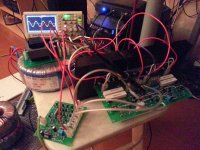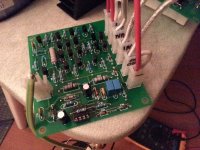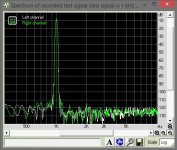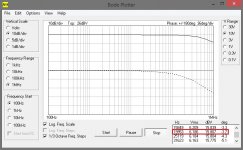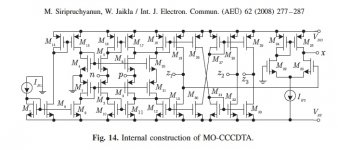few MHz gain intercept is a order of magnitude below faster audio power output Q Ft, package parasitics limits - many audio amp designs are working to that conservative limit already
feedback theory and engineering has the tools to determine the practical limits, work with systems with genuinely "large delays" relative to the "working band" verified by that over 1/2 century of practice over many domains
in electronics apparently many can go far in their careers without actually learning, using Bode Integral relations - because the speed of the electronics is so high relative to audio or many industrial applications
with few MHz gain intercept frequency seen in many audio power amp designs we can have 60 dB of Global feedback by 20 KHz, add another few decades feedback at the fundamentals of musical instruments, even using Bode's Maximum Loop Gain formulation for unconditional stability
and Cherry's nested feedback, other examples (Halcro with some commercial success) - a few documented, built by people on this site can go further into conditional stability and higher feedback gains
feedback theory and engineering has the tools to determine the practical limits, work with systems with genuinely "large delays" relative to the "working band" verified by that over 1/2 century of practice over many domains
in electronics apparently many can go far in their careers without actually learning, using Bode Integral relations - because the speed of the electronics is so high relative to audio or many industrial applications
with few MHz gain intercept frequency seen in many audio power amp designs we can have 60 dB of Global feedback by 20 KHz, add another few decades feedback at the fundamentals of musical instruments, even using Bode's Maximum Loop Gain formulation for unconditional stability
and Cherry's nested feedback, other examples (Halcro with some commercial success) - a few documented, built by people on this site can go further into conditional stability and higher feedback gains
Last edited:
I suppose it is a joke ?fbecause the speed of the electronics is so high relative to audio
The thing that many do not understand is that NFB is not the bad guy here (as long as it is properly designed and the amplifier has plenty of drive current margin).
More annoying for these guys :
they fail to prove that NFB is a bad guy here.
The thing that many do not understand is that NFB is not the bad guy here (as long as it is properly designed and the amplifier has plenty of drive current margin).
Cheers,
Bob
Often not the case in many consumer designs of the past. It's been a weak point of many designs with bjt OPS.
THx-RNMarsh
Last edited:
Another live protorype
Hi all, last night tested the new CFA prototype (HERE). Great performer with dadod's GainWire line amp as an input buffer.
Will do some more measurements and testing soon...
Hi all, last night tested the new CFA prototype (HERE). Great performer with dadod's GainWire line amp as an input buffer.
Will do some more measurements and testing soon...
Attachments
Hi all, last night tested the new CFA prototype (HERE). Great performer with dadod's GainWire line amp as an input buffer.
Will do some more measurements and testing soon...
Hello vzaichenko,
What is the power and load the THD spectrum you are showing measured at.
Hi PHEONIX,
This particular one is 8V RMS at 4ohm, giving us 16W output power.
I can measure at higher power - at 100W it will be very close to this one.
It will increase after 200W of output power to somewhat 0.003% @ 1kHz
This design also has THD rather frequency independent - thanks to pretty high open loop bandwidth, CFB and light compensation - THD increase at 20 kHz will be small.
I will post some more measurement results soon - just have to slightly reconfigure and enhance my measurement system.
This particular one is 8V RMS at 4ohm, giving us 16W output power.
I can measure at higher power - at 100W it will be very close to this one.
It will increase after 200W of output power to somewhat 0.003% @ 1kHz
This design also has THD rather frequency independent - thanks to pretty high open loop bandwidth, CFB and light compensation - THD increase at 20 kHz will be small.
I will post some more measurement results soon - just have to slightly reconfigure and enhance my measurement system.
Last edited:
CFB Books
Recommended reading --
"NEW Current Feedback Operational Amplifiers and Their Applications by Raj Senani"
and...
"Current Differencing Transconductance Amplifier and Their Applications"
Both available on eBay.
THx-RNMarsh
Recommended reading --
"NEW Current Feedback Operational Amplifiers and Their Applications by Raj Senani"
and...
"Current Differencing Transconductance Amplifier and Their Applications"
Both available on eBay.
THx-RNMarsh
Member
Joined 2009
Paid Member
This is the basic building block that is the subject of the paper:
Attachments
Last edited:
I'll be there in Bangkok in 3 weeks. Will learn more.
BTW -- some times the link works and sometimes it doesnt.... just keep trying.
THx-RNMarsh
effect resulting from the negative output impedance of the amplifier
ROWEN - schweizer high-end Audio
bible_d 1.pdf
best regards
Petr
ROWEN - schweizer high-end Audio
bible_d 1.pdf
best regards
Petr
effect resulting from the negative output impedance of the amplifier
ROWEN - schweizer high-end Audio
bible_d 1.pdf
best regards
Petr
Nice article. We can see such results with several individual FFT but not as a single plot/line on a graph. We just do the FFT at different freqs and note the harmonic levels of 2H, 3H, 4H etc and compare to see if the harmonic levels are changing. Now that I have an AP2722 unit, I wonder if the software to run those tests of harmonic vs freq is available to others.
I did notice, too that their amps distortion is a lot higher than the SIM's and amps we do here at DIY-er Land. If we are well below THD of -100dB to 20KHz, I'm not so sure the plots of harmonics this new way will matter... can it still be heard?
The other point -- and, we have thought about it here, is the reflected speaker signal (back emf) into the amp. This is very important to minimize with good design for a true Blameless Amp to exist.
THx-RNMarsh
Last edited:
The idea of canceling the positive resistance of the cables will do what it does, but I'm not sure how much the extra 250mR resistance can worsen a speaker which already has 8R series resistance caused by the wire in the coil itself. That's a 3% difference. For 4R it's 6%. For 2R it's 12%, etc. And the amplifier only cancels linear resistance; any nonlinear resistance will still leave the same distortion.
There's anecdotal evidence that moderate damping factors sound a bit more pleasing to the ear than high damping factors. And, tube amplifiers certainly dont have high damping factors, yet sound pleasing to the ear.
Best way to test the proposition is to wire a 1/2 Ohm in series with your speaker with a switch across it and take a listen.
I suspect, as you do, that the speaker cable, cross over and coil resistance all swamp anything you can do on the amplifer end - unless of course the amplifer is sitting inside the speaker cabinet . . . and then we are probably dealing with a whole new set of undesireables anyway.
A series resistor may offer benefits in isolating the load from the amplifier, as does an output inductor at HF . . .
Best way to test the proposition is to wire a 1/2 Ohm in series with your speaker with a switch across it and take a listen.
I suspect, as you do, that the speaker cable, cross over and coil resistance all swamp anything you can do on the amplifer end - unless of course the amplifer is sitting inside the speaker cabinet . . . and then we are probably dealing with a whole new set of undesireables anyway.
A series resistor may offer benefits in isolating the load from the amplifier, as does an output inductor at HF . . .
A series resistor may offer benefits in isolating the load from the amplifier, as does an output inductor at HF . . .
That is exactly what JLH did in his 80 W mosfet amp, 0.22 ohm instead of output inductor, and it sounds excellent to my ears.
- Home
- Amplifiers
- Solid State
- CFA Topology Audio Amplifiers
